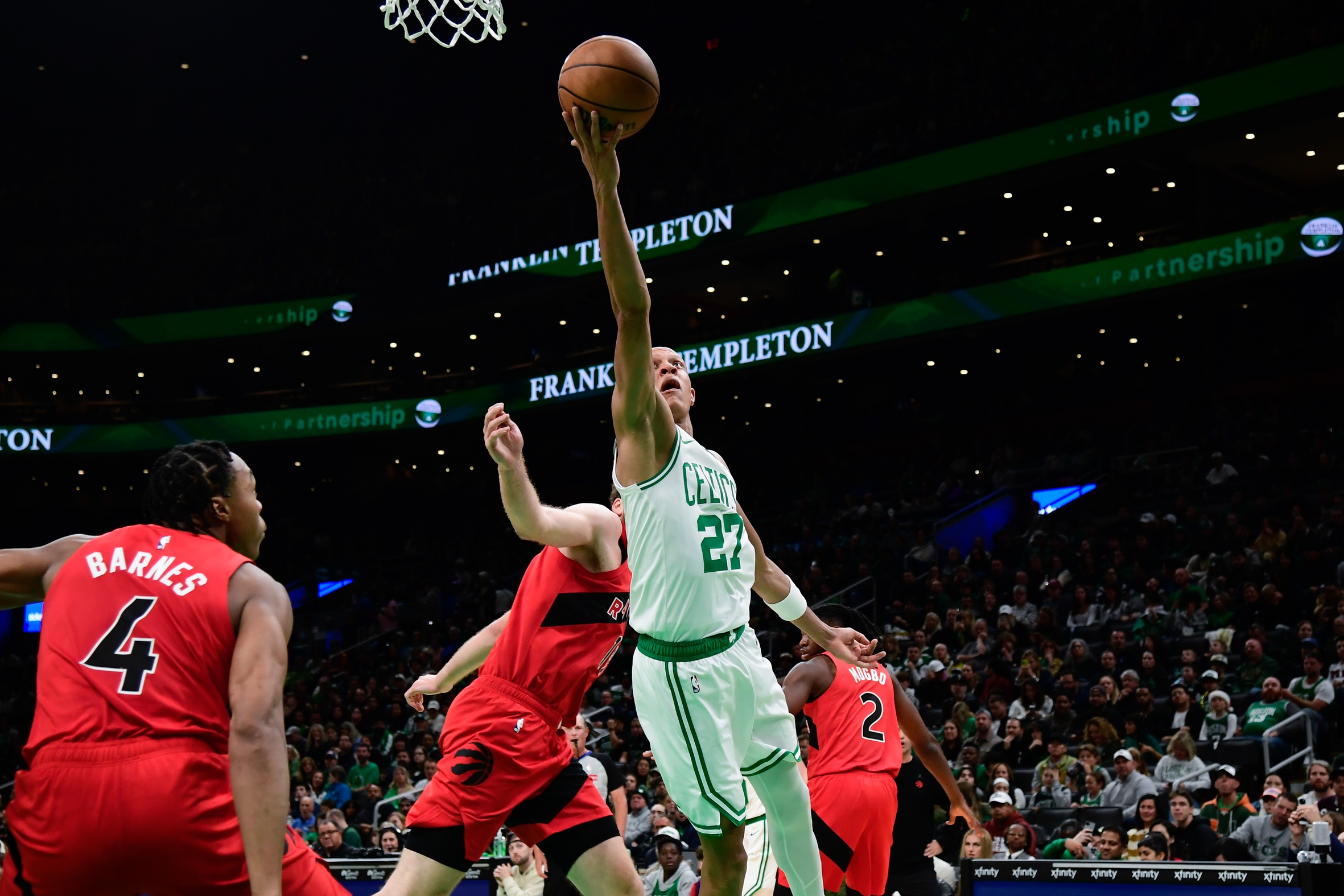The Boston Celtics are 7-2, second in the Eastern Conference behind the undefeated Cleveland Cavaliers. Despite missing two starters, one who has yet to suit up at all this season, the reigning NBA champions have largely looked dominant. However, while they’re a formidable team who looks like they can repeat, there are a couple of problems.
Health aside, the Celtics are barely putting any pressure on the rim. In fact, Boston ranks dead last in two-point conversions per game (23.0) and just 15th in free-throw attempts per game (23.6). This is primarily due to a shift in their offensive philosophy, which has led to certain players not playing to their strengths as much as they should.
One of those players is none other than Jaylen Brown. Another is Jordan Walsh, who the Celtics drafted just outside of the first round last year.
How Celtics Can Get More Out Of 2023 Draft Pick Jordan Walsh
Walsh’s production has been modest, to put it kindly.
The 6-foot-7 forward is averaging just 1.3 points, 1.3 rebounds, 0.4 steals, 0.3 blocks, and 0.1 assists in 10.5 minutes per game. He’s made 26.7 percent of his field goal attempts and 16.7 percent of his three-point attempts, both career-lows. For a player ranked 11th in the Class of 2022 by ESPN, these numbers are frankly disappointing.
It’s not necessarily Walsh’s fault though. He’s a victim of circumstance. There are certainly benefits to being a young player who’s an understudy on a veteran-laden title-contender. He’s learning winning habits and training with exceptional talents.
However, he doesn’t receive nearly as much opportunity as he might have on a rebuilding or non-playoff team. He’s not really a shot-hunter in most outings, so his scoring average may not have been worth writing home about regardless. Still, he’d be averaging more than 1.5 points per game in his NBA career. More to the point, he’d be producing more across the board.
Why Not Play To His Strengths?
Walsh may not be getting a picture perfect opportunity, but the Celtics could still put him in better positions offensively.
To this point, he’s basically been used in a 3-and-D role. 70.0 percent of his career field goal attempts have come from three-point range (80.0 percent in 2024-25). If Walsh wasn’t a career 19.0 percent three-point shooter who made 27.7 percent of his threes as a one-and-done at Arkansas, this would made sense.
Of course, Celtics head coach Joe Mazzulla wants his team to focus on the three-ball. Nonetheless, like Brown, there are some players who have to buck the system to be at their best. Walsh is one.
Coming out of college, Walsh was at his best around the rim. Whether slashing or out on the break, he had a knack for finishing. He can score with either hand, above or under the rim. On top of that, he’s a smart cutter.
He isn’t able to do much or any of that in Boston, which is particularly strange for a team with multiple stretch-centers. In fact, veteran big man Al Horford is shooting a team-high 48.4 percent from three this season. With the type of space that he and others can create, there’s no reason why Walsh shouldn’t be attacking the rim more. His ability to play off of Jayson Tatum’s passing makes the idea of getting him on the move even more appealing.
Return On Investment
As the Celtics are missing Brown right now, it’s a great time to see what a higher usage role for Walsh might look like. There doesn’t have to be a target statistically and perhaps there shouldn’t be. Yet, there does need to be an intent to maximize Walsh. It would definitely benefit him, but the team would be better off for it as well.
For starters, they’re optimizing their return on investment in terms of the draft pick they used. However, there’s also a financial incentive. Walsh has already demonstrated that he has a high defensive floor. By leaning into his strengths offensively, the Celtics will have another two-end player, and one on an affordable contract at that.
A team with a payroll as high a Boston’s could surely appreciate that.






